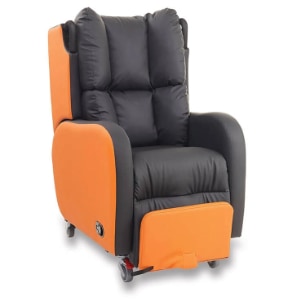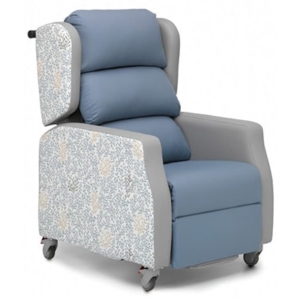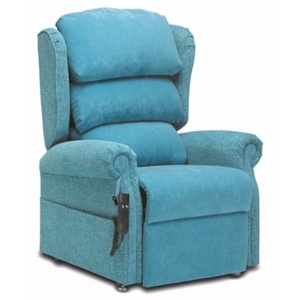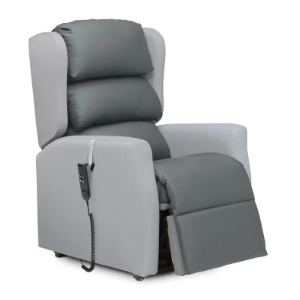A Guide to Specialist Chairs for Pressure Sores and Skin Breakdown
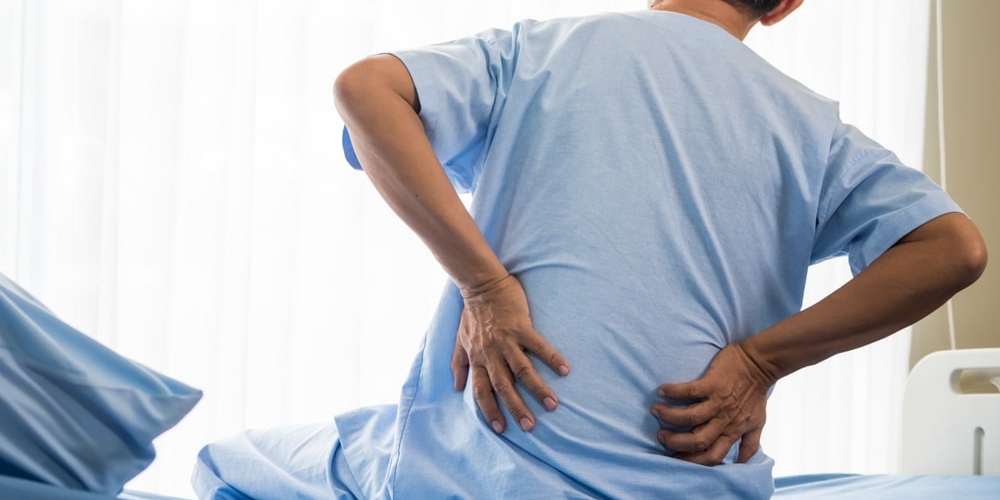
What Are Pressure Sores & Skin Breakdown?
Pressure sores, also known as pressure ulcers, develop due to prolonged pressure or rubbing on an area of skin. Bony areas of the body are most commonly affected by pressure sores because they have less natural padding (muscle or fat) to protect the skin and underlying tissues from pressure. When someone sits or lies in the same position for a long time, these points (like the heels, hips, elbows, and tailbone) bear most of the body’s weight.
This constant pressure restricts blood flow to the skin and tissues over those bones. Without enough oxygen and nutrients, the cells begin to break down, leading to tissue damage and, eventually, an open wound. Friction and shear, which occur when the skin rubs or slides against a surface, can make this worse, further injuring delicate tissues.
Pressure ulcers can appear discoloured and will not change colour when under pressure. Different skin tones may present pressure ulcers differently, with white skin presenting as red, and black or brown skin presenting as purple or blue in the affected area.
A pressure ulcer will feel warm, spongy or hard and they can be painful or itchy. If left untreated, pressure ulcers can blister and become open wounds. Eventually, they can reach deeper layers of skin, muscle or bone.
Who is Most at Risk of Pressure Sores?
People with low mobility, poor nutrition, incontinence, fragile skin conditions, the elderly or those with serious illnesses like diabetes or dementia are most at risk of pressure injuries.
Causes of Pressure Sores
Low Mobility
Those with low mobility will not be able to move themselves very often or independently; therefore, they can't relieve pressure on the same areas of the body that someone with full mobility can.
Neurological Conditions
Neurological conditions like dementia, stroke or spinal cord injuries can drastically impair movement and sensation. People experiencing loss of sensation will not feel discomfort and wouldn't be aware that they are in a position that is worsening their condition.
Ageing
As we age our bodies become frail. This loss of protective fat and muscle mass means skin becomes thinner and we are more vulnerable to damage.
Poor Blood Supply
Diabetes increases the risk of ulcers due to low blood flow, weakened connective tissues, and impaired wound healing. Vascular diseases affect the arteries, veins, and lymphatic system. It is a major contributing factor in chronic wounds, limb complications, and skin breakdown.
The Role of Specialist Chairs in Pressure Sore Prevention
Supporting Pressure Redistribution
Specialist chairs are designed to disperse body weight evenly, preventing prolonged pressure on vulnerable areas, such as the sacrum, buttocks, and hips. We use advanced cushion technologies, like memory foam, gel, or air systems, to maintain blood flow and minimise tissue damage risk. You can find out more about the different recliner chair cushion materials and their suitability to various conditions in our article, What Makes a Good Recliner Chair Cushion.
Encouraging Correct Posture and Alignment
Whether you will use it in the home, a care or hospital facility, durability is crucial. Healthcare chairs are designed with high-quality materials to endure wear and tear even in a busy exam or waiting room. Furniture isn't only for the ambience since it adds finesse to the healthcare environment. Healthcare chairs need to be appealing and less refined compared to others in the market. However, advancement and cutting-edge tech have produced various alternatives.
Reducing Friction and Moisture Build-Up
Specialist seating uses breathable, moisture-wicking fabrics that keep the skin dry, lowering the risk of maceration. Smooth, low-friction surfaces minimise skin tearing during transfers or movement.
Individual Assessment and Customisation
The effectiveness of specialist chairs depends on a personalised assessment carried out by an occupational therapist, physiotherapist, or other healthcare professional. Each user’s body shape, weight, mobility level, and medical condition influences the ideal seating setup. This ensures the chair supports comfort, stability, and pressure relief in equal measure.
Integration with a Holistic Prevention Plan
While specialist chairs are key tools, they work best as part of a comprehensive prevention strategy, alongside repositioning schedules, skin checks, and proper nutrition. Regular reviews ensure that both the user’s condition and the chair’s components remain effective over time.

Maintenance and Care of Specialist Chairs
Regular checks should include, but are not limited to:
- Damage to the cables.
- Cables are not trapped under the chair.
- Any loose or detached parts.
- Damage to the handset.
- Damage to the fabric of the chair.
- Castors for damage or any buildup of fluff, dirt, or dust.
Some additional key points include, making sure to always disconnect the power supply when checking and do not use the chair if it is not working properly or damaged. You should also regularly dress the chair to avoid the cushions and upholstery looking tired. Follow the fabric manufacturer's cleaning instructions for your chosen fabric.
Best Recliner Chairs for Pressure Sores and Skin Breakdown
At Repose, all of our recliner chairs feature specialist pressure care cushioning, with a wide range of options available to customise features and meet each user’s specific needs. As one of the UK’s leading manufacturers of healthcare recliner chairs, we supply high-quality seating solutions to hospitals, care homes, and clinical environments across the country. Every chair is designed with comfort, support and durability at its core, helping to enhance quality of life for individuals with a variety of healthcare needs.
Our Top Recommendations
FAQs: Specialist Chairs for Pressure Sores
The most popular seat cushions for specialist seating are Coolform and Liquiform, as they aid pressure redistribution and contain a gel to help dissipate heat.
